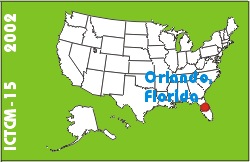
Electronic Proceedings of the Fifteenth Annual International Conference on Technology in Collegiate MathematicsOrlando, Florida, October 31-November 3, 2002Paper C003Developing Streaming Audio Lectures for Online Courses |
Nora StrasserFriends University 2100 University Wichita, KS 67213 USA Phone: (316) 295-5879 Fax: (316) 295-5404 strasser@friends.edu list of all papers by this author |
| Click to access this paper: |
ABSTRACT
One large limitation of using the web to deliver mathematics instruction is the inability of students to read and understand mathematics. Most average students are unable to understand mathematics by simply reading the book. They need more than just reading to develop the understanding necessary. In a traditional classroom, we use two ways to achieve this understanding. We lecture and demonstrate techniques on the blackboard. By using PowerPoint to create the demonstrations typically done on the blackboard and then narrating these demonstrations, we hope to achieve the same type of understanding that students get from a traditional classroom. One advantage students on the web will have is the ability to listen to the 'lecture' repeatedly.To accomplish this goal, PowerPoint was used to create slides that could then be narrated. These slides had to include mathematical symbols and diagrams. The slides needed to mirror the typical blackboard presentation done in a traditional classroom. The Equation Editor in Microsoft PowerPoint was used to create equations for the presentation. While other types of diagrams were scanned so that they could be included.
Once the PowerPoint presentation was completed, Real Presenter was used to record narration for the slides. Using a quality microphone and a script were essential to achieving a satisfactory recording. Then the whole presentation was published to a streaming server. Once the presentation was uploaded to the server, links were created in the course's web site. Students are now able to access these 'lectures' at any place and at any time.
Keyword(s): Internet, distance learning
